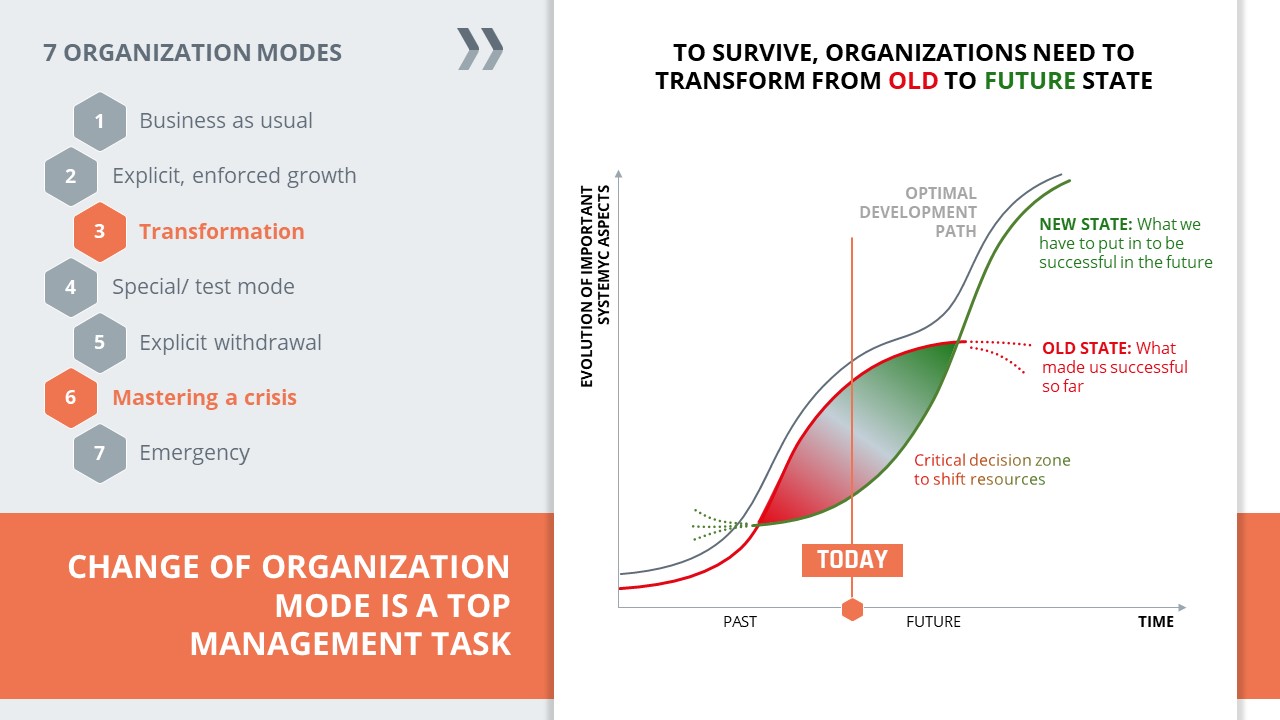Set and follow your transformation plan consistently and purposefully
The planning component of a transformation is designed to deliver consistent implementation. From the outset, it is essential to convey the transformation plan in a clear and structured way and to set up a firm performance framework which is closely monitored by strict milestone tracking and impact assessment.
Of course, even with the best planning in the world, there is no protection against unfavourable and unforeseen outside conditions, as the events of the past three years have made clear. Leaders must therefore remain extremely alert to changes in the environment. Jim Collins even speaks of a “planning paranoia”, which can be converted into productive action.
The secret is to stick to planned objectives, not underperforming but at the same time not striving for even further-reaching results that go beyond the scope of the current transformation. This is because even if it seems tempting to overdo the speed, scope, and other elements, organizations cannot usually keep this up over the long run and the positive momentum behind the transformation is lost. For the same reason, it is important during the planning phase to scrutinize transformation plans closely and examine their feasibility for the organization.










